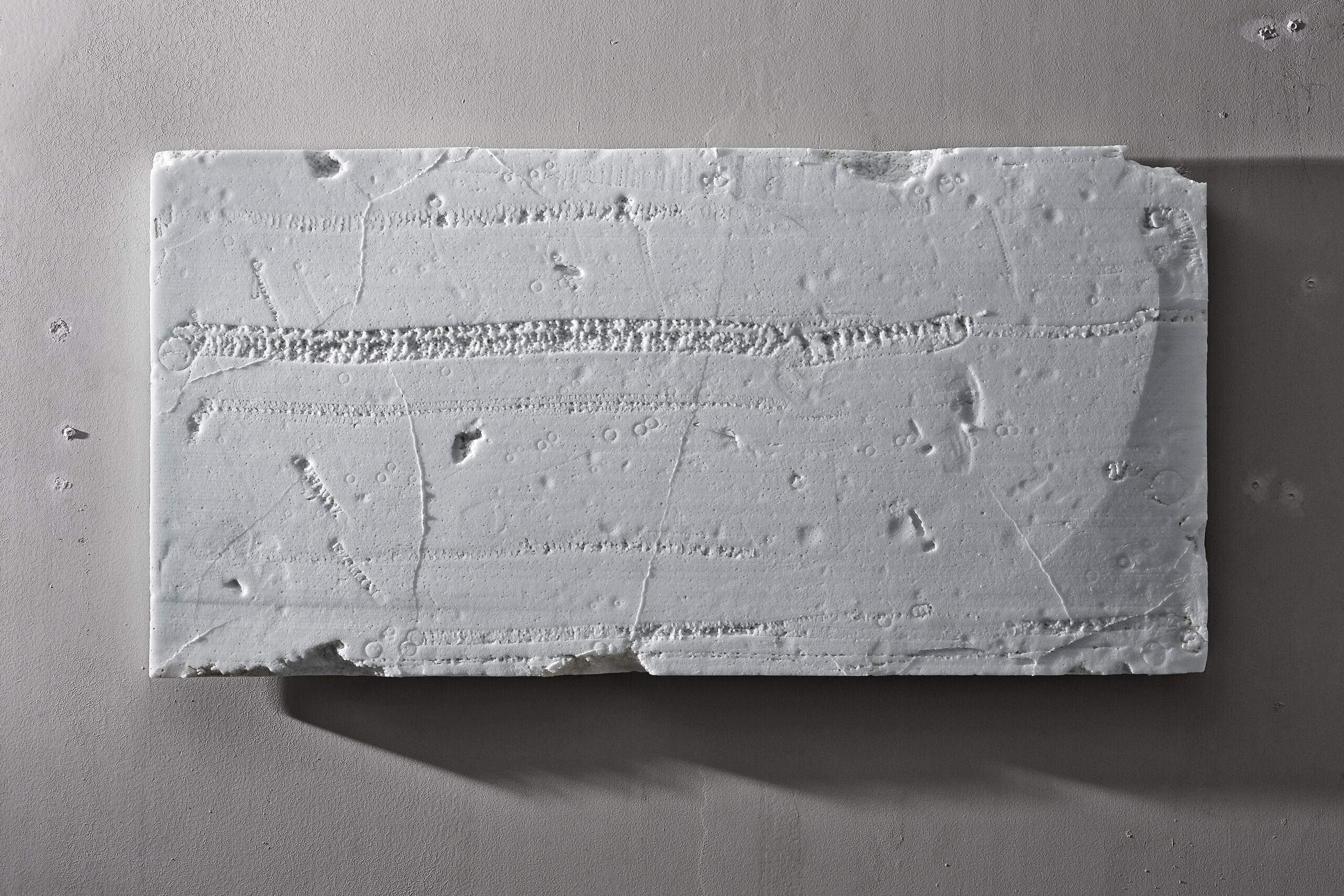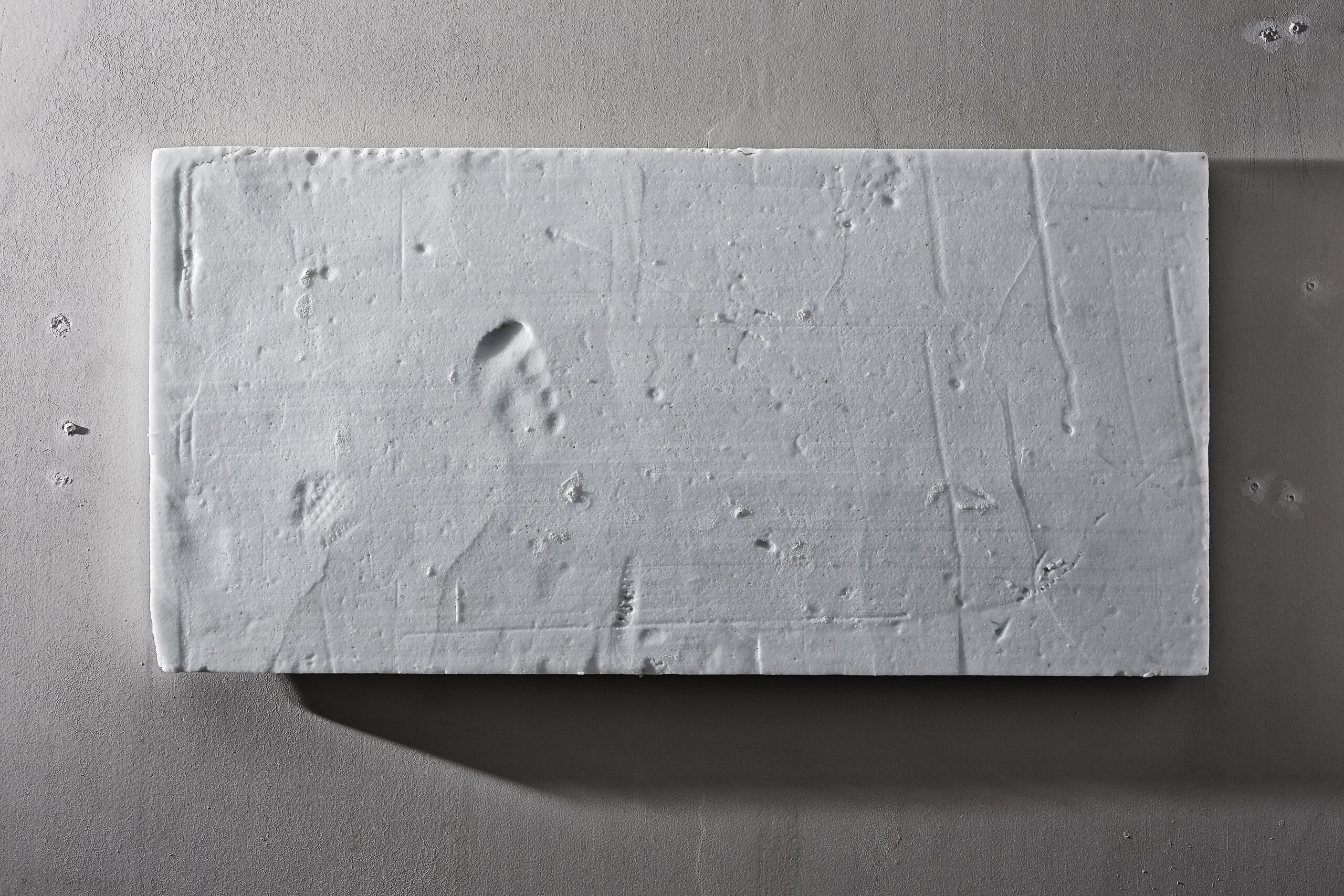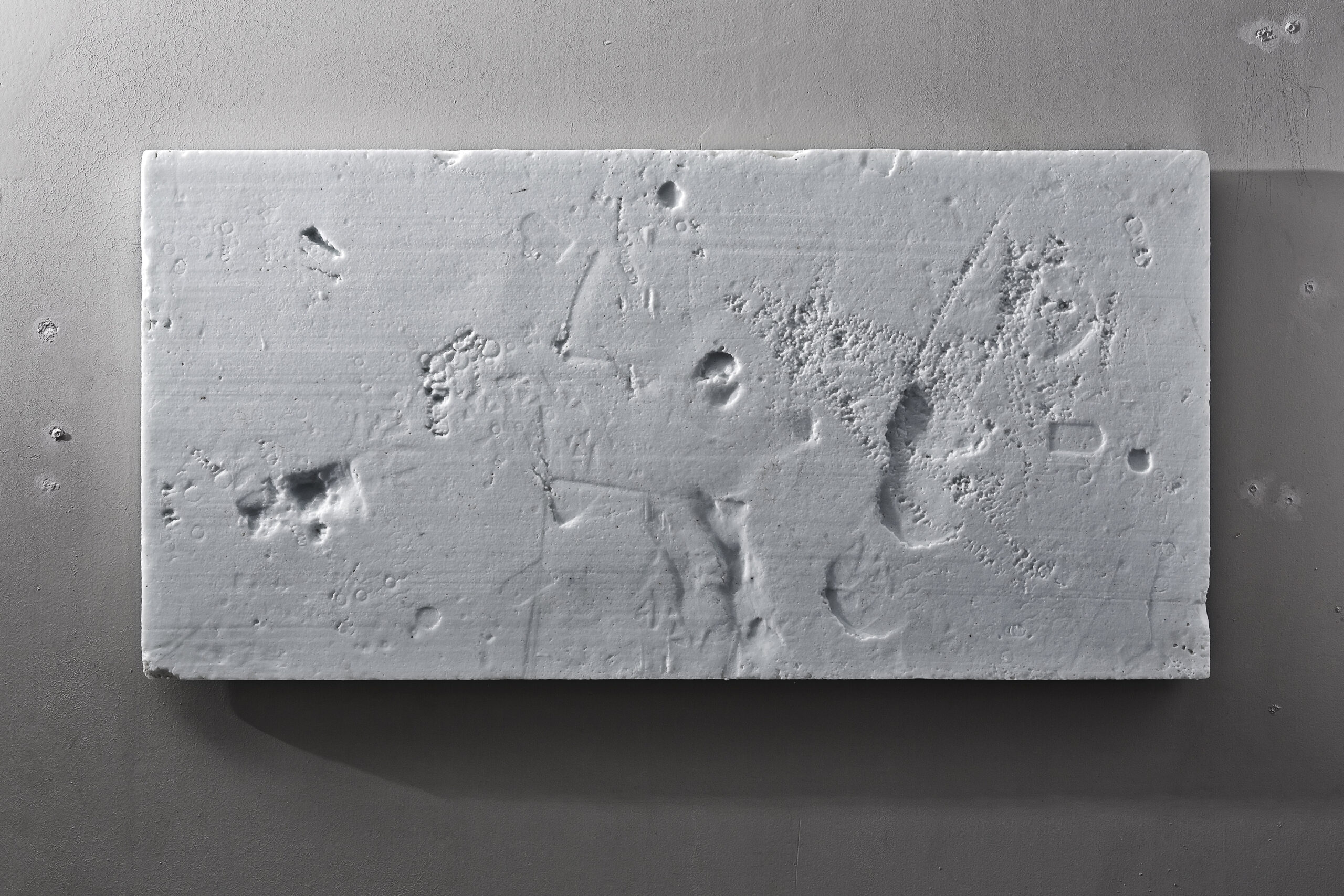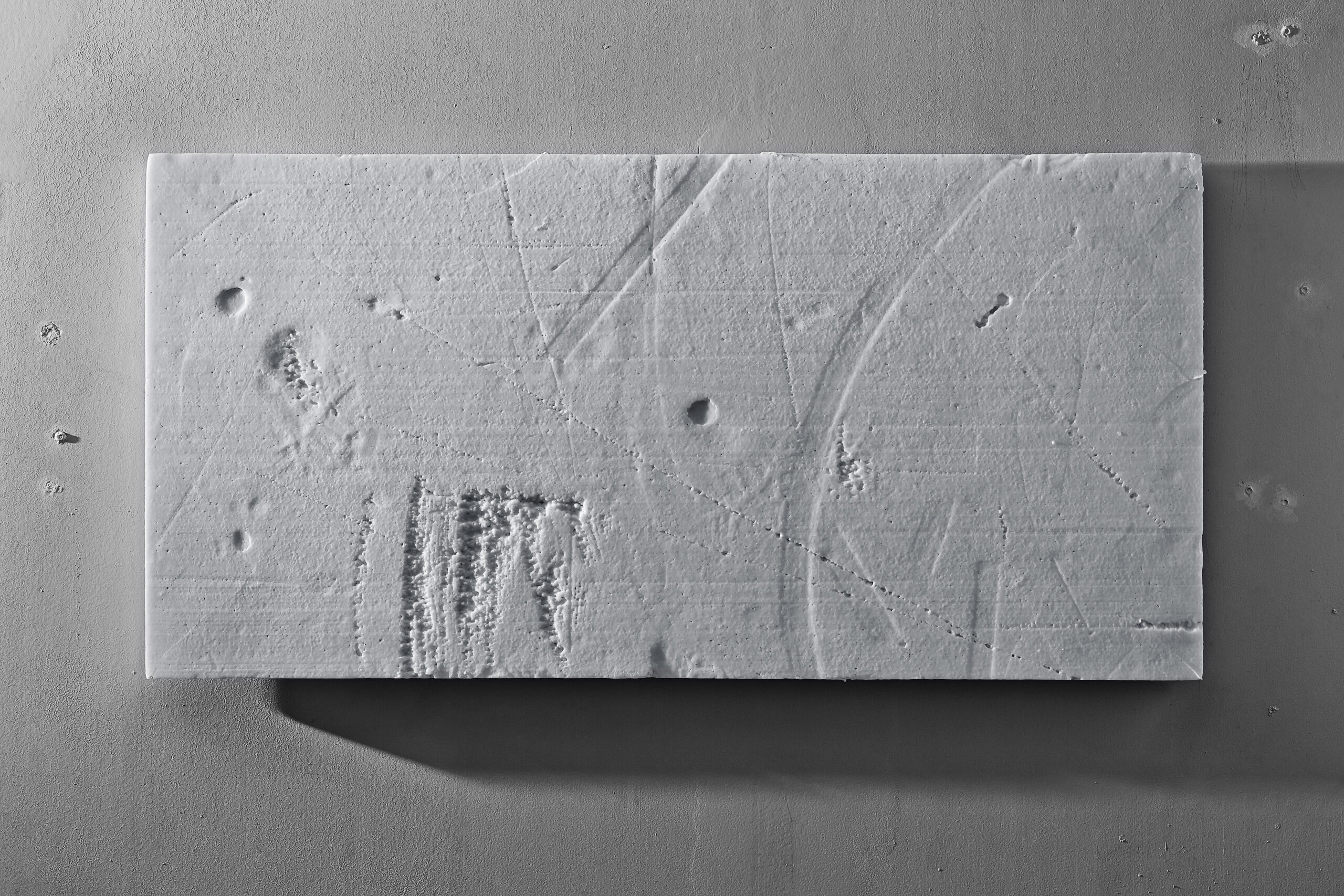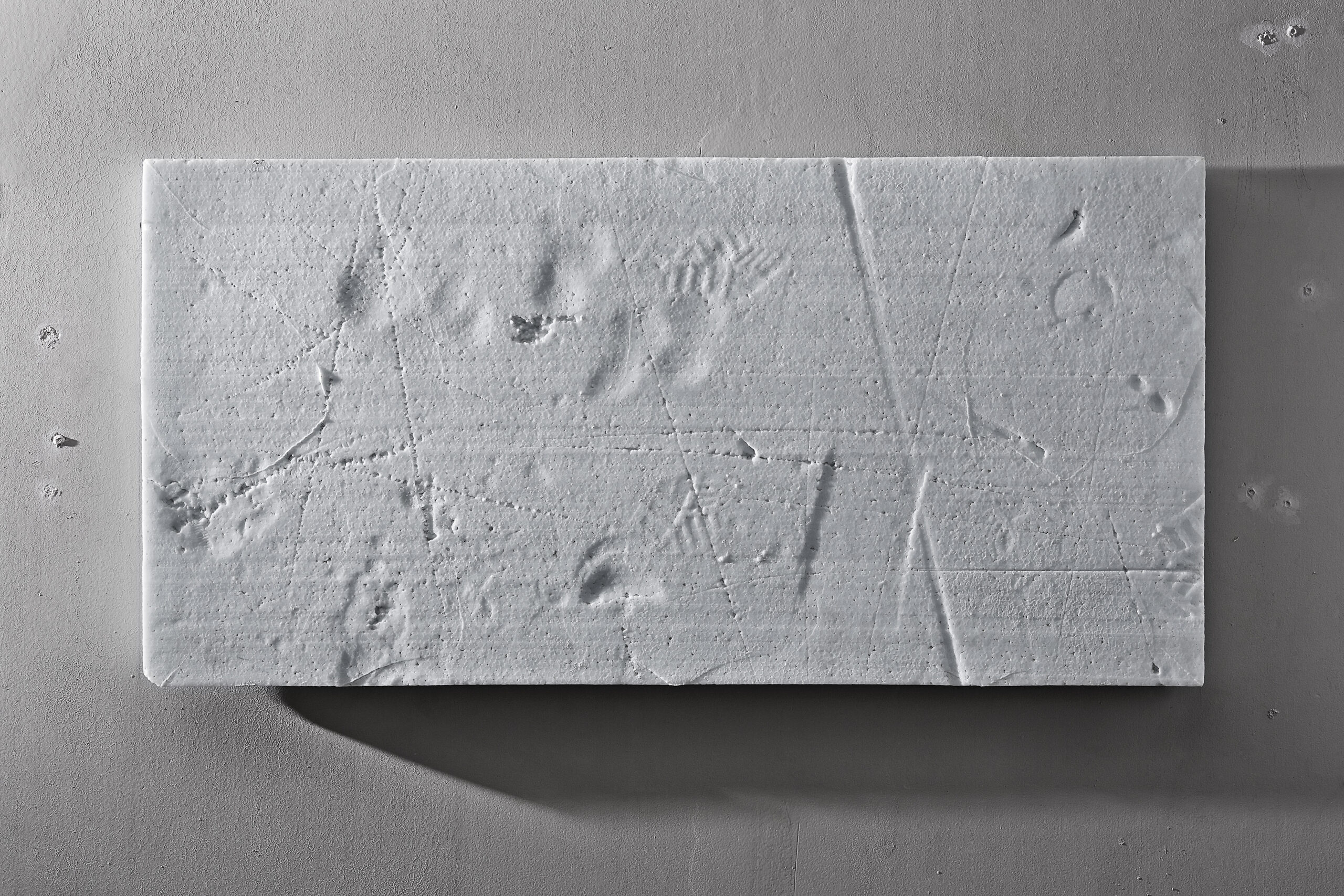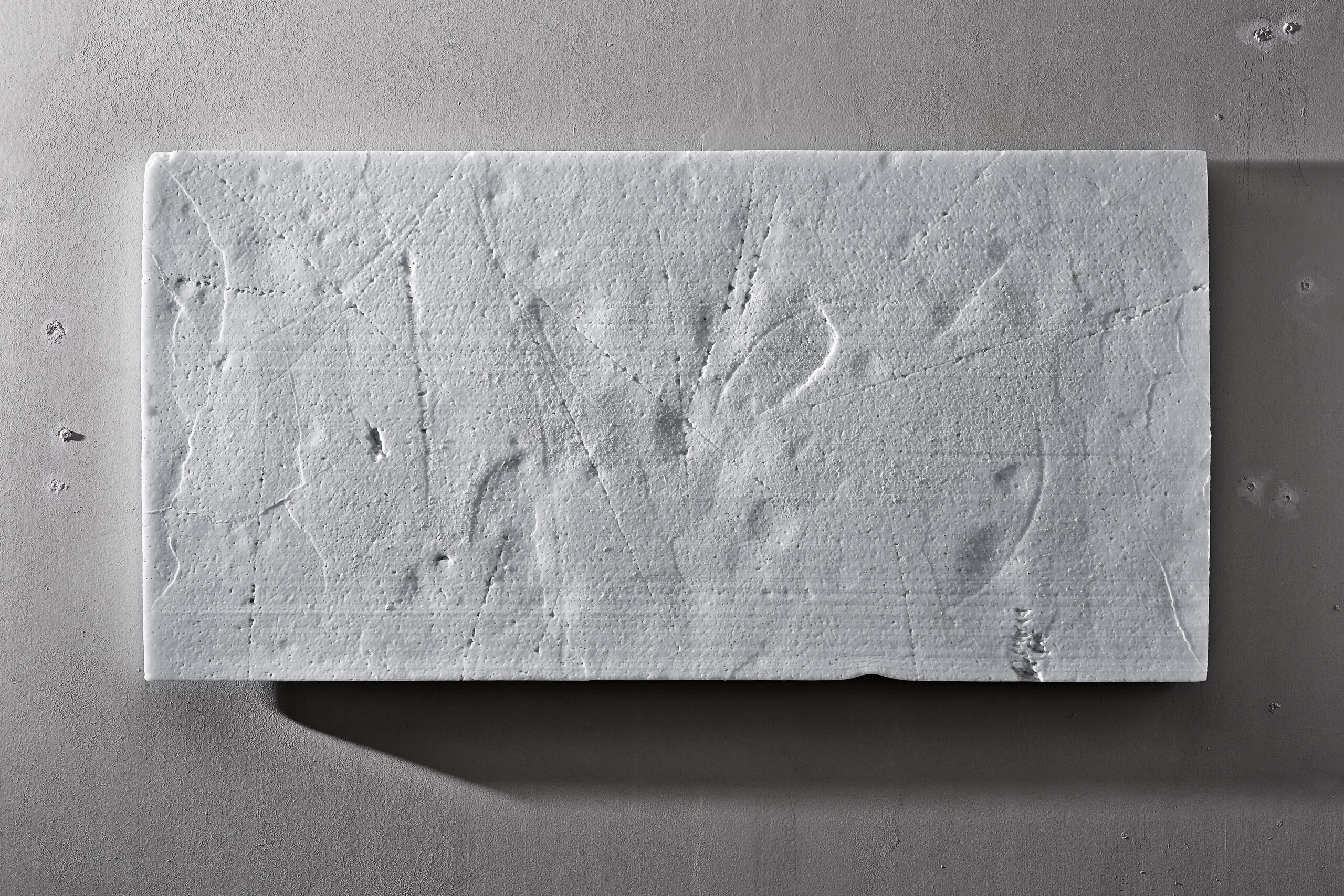Albus
2014 . kiln cast glass . dimensions variable . photo W. Baumann
The origin of this work was inspired by Styrofoam- packages. It’s an arrangement of, at maximum, eight 50 x 100 cm large glass panels. They are made of opaque white glass featuring a thickness of about 3 cm. They represent commercially available polystyrene plates. The graphic design is made to recreate traces of use. The panels are arranged on the wall and unfold an additional effect on the room in addition to their mere imagery. The title „Albus“, stemming from the latin word for white refers to the colour of the glass. The change of materiality from Styrofoam to glass is of fundamental importance, for the assessment of the sculptural art work at hand. The direct material properties change: The soft becomes hard, the lightweight becomes heavy. When glass shatters, it produces sharp edges, in contrast to polystyrene, which is composed of soft globules. Furthermore, the aspect of valence is important, glass is expensive and considered noble, Styrofoam however is cheap, available and dull. Through transformation of materiality a change in meaning takes place. The sculpture is pushed into a distance, it loses its immediacy, which was an essential characteristic of Styrofoam. Made out of glass however, an increase of the works auratic character takes place. Not only the material itself, but the installation of the panels in the room is of importance in this particular case. The arrangement of the panels defines the room and extends the imagery of the artwork. A sense of sublimity is created that is in contrast to the commonly encountered Styrofoam articles, the work is inspired by. The plate’s graphic design resembles the appearance of Styrofoam instead one of glass. The traces tell the story of each plate, each one reaching an endpoint through the glass’ solidification.

